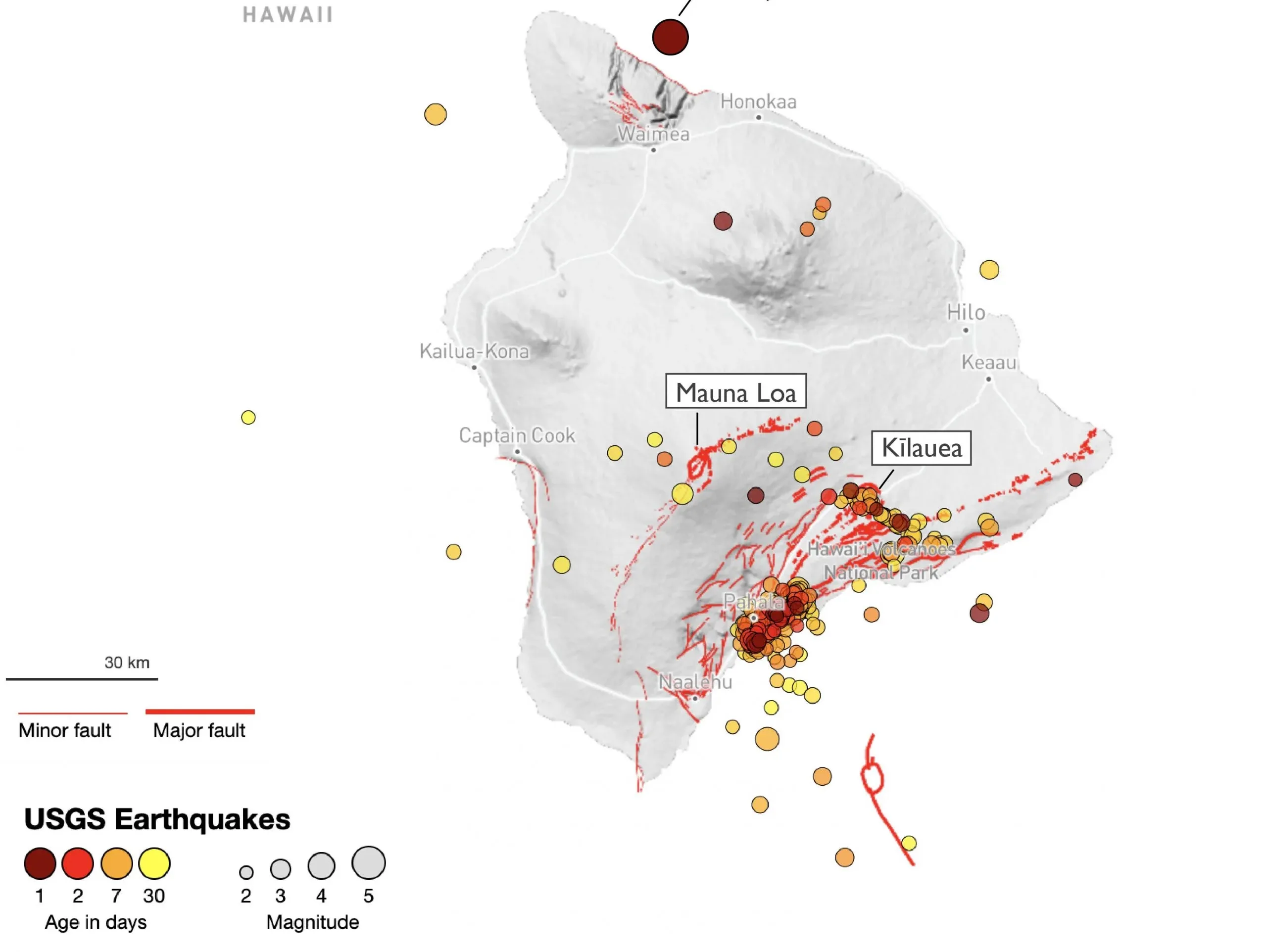Introduction:
In recent days, both California and Hawaii have experienced significant (earthquake) seismic activity, causing concern among residents and officials. A magnitude 4.6 earthquake struck parts of Southern California, especially northwest of Malibu, while a magnitude 5.7 quake struck Hawaii’s Big Island, centered around Mauna Loa, the world’s largest active volcano. Let’s delve deeper into these events, understand their impacts, causes and possible consequences.
California Magnitude-4.6 Earthquake – Overview and Impact

On Friday afternoon, a magnitude 4.6 earthquake struck northwest of Malibu, causing massive aftershocks throughout Southern California. The earthquake, which struck just before 2 p.m., originated about 7 miles northwest of Malibu in the Santa Monica Mountains. Seismologist Dr. Lucy Jones highlighted the sequence of intense aftershocks that followed the initial earthquake, with several aftershocks reported within an hour.
Implications of Earthquake:
The earthquake’s impact was felt by approximately 12 million people throughout the Los Angeles area, from coastal areas to inland areas such as the San Fernando Valley.
Although there were reports of shaking and minor disruption, there was no immediate significant damage. Standard damage surveys were initiated by the Los Angeles Fire Department as a precautionary measure.
Fault Lines and Historical Context:
While various earthquake faults are spread throughout the region, including the Malibu Coast Fault, the exact fault of the earthquake remains under investigation.
Interestingly, this earthquake occurred on the same day as the deadly San Fernando earthquake of 1971, a reminder of the seismic sensitivity of the region.
Hawaii Magnitude-5.7 Earthquake – Events Revealed

The Big Island of Hawaii suffered its own seismic event with a magnitude 5.7 earthquake, centered southwest of Pahala. The earthquake, which struck around noon, shook towns and villages, although initially there was no significant damage. The earthquake’s connection to the active volcano Mauna Loa raised concerns, but it did not cause volcanic activity or a tsunami.
Understanding Hawaii’s Seismic Activity:
Hawaii’s geological landscape, characterized by volcanic activity, is prone to frequent earthquakes due to the weight of the islands on the oceanic lithosphere. This phenomenon, known as lithospheric flexure, can cause earthquakes such as the recent magnitude-5.7 event.
Impact on communities:
The earthquakes in both California and Hawaii had significant impacts on local communities. In California, residents experienced shaking and minor disruptions, but no significant damage was immediately reported. In Hawaii, power outages and merchandise falling off shelves were reported, although structural damage was minimal.
Despite the challenges posed by seismic events, communities demonstrated resilience and readiness in the face of adversity. Responses from residents and officials highlighted the importance of preparedness measures and effective emergency response protocols.
FAQ?
Q1. Are these earthquakes a sign of larger seismic events?
Answer: While tremors are common, the probability of a major seismic event decreases with time.
Q2. What precautions should residents take after an earthquake?
Answer: Residents should remain vigilant, secure loose objects, check for gas leaks or structural damage and follow guidance from local authorities.
Q3. How does Hawaii’s volcanic activity affect seismic events?
Answer: Hawaii’s volcanic activity contributes to the occurrence of earthquakes, primarily due to the pressure exerted on the Earth’s crust by the mass of the islands.
Q4. What measures are in place to reduce earthquake hazards in California and Hawaii?
Answer: Both regions have stringent building codes, emergency response protocols and public awareness campaigns to minimize the impact of earthquakes and ensure community safety.
In conclusion, the recent earthquakes in California and Hawaii are a reminder of the dynamic geological processes that shape our planet. Although these events can create fear and uncertainty, proactive measures and community resilience play an important role in reducing their impact and protecting lives and property. By understanding the causes and effects of earthquakes, communities can better prepare for future seismic events and ensure the safety and well-being of their residents.
Recommended Reading:-https://citytimesnow.com/4-2-magnitude-earthquake-hits-northern-california/


